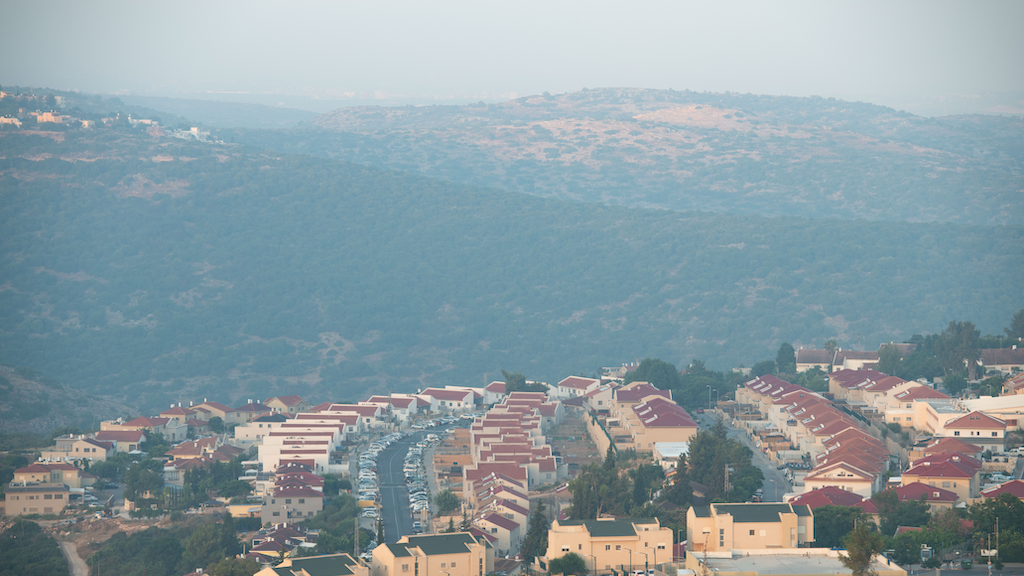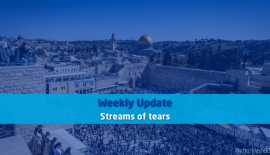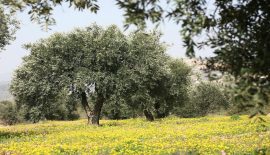Celebrating Judea and Samaria
Israel is 75 years old. For an individual, that is already an advanced age, a time when one can begin to look back and evaluate a life that began with great dreams and finds itself winding down after years of activity and accomplishments. For a nation, it is a small increment of time. And for the Nation of Israel, that dates its inception back 4,000 years to the time of our first forefather Abraham, or at the very least to the Exodus from Egypt, a few hundred years later, 75 years is the equivalent of minutes.
But it is still a good time to look back and reflect. When Israel was established, there were approximately 600,000 Jews living in the country. Within a short time, hundreds of thousands of refugees streamed into the country with nothing but the clothes on their backs—Holocaust survivors and Jews who had been expelled from their homes in Muslim countries. There was no housing, not enough food. Most of the refugees knew little or no Hebrew and came from a mixture of cultures and backgrounds. The parents struggled with the cultural differences, but the children all played soccer together on the dirt fields just outside their temporary homes. They were all struggling to survive, but they were thrilled to be part of building the Jewish State of Israel.
Jerusalem was a tiny backwater, a slum. There was no glorious main street with shops and hotels. No one wanted to visit Jerusalem because it wasn’t the real Jerusalem. The Old City, hidden behind its stone walls, was occupied illegally by Jordan. Jordanian soldiers were stationed on the path leading to the Jaffa Gate, periodically taking potshots at the half-destroyed buildings of Mamilla, where refugees eked out a meager existence while dodging the bullets from Jordan. I remember visiting Jerusalem in 1973, after the Jordanians were already gone, and seeing the holes that the shelling had left in the walls of the crumbling Mamilla structure.
For 19 years, Israel celebrated its independence but lacked the confidence to look forward. Surrounded on all sides by hostile neighbors, no one knew what the future would bring. In May of 1967, just a few weeks before the Six Day War began, Rabbi Zvi Yehuda Kook, an elderly, pious rabbi, head of a small yeshiva in Jerusalem, addressed his students on Israel’s 19th birthday. His cry rang out to them: “Where is our Hebron? Where is our Shechem?” It was a ringing cry that echoed what so many Jews had since forgotten, that while we finally had a state of our own, we did not have the heart of Biblical Israel. And of course, at that time, we didn’t even have the Old City of Jerusalem.
Just a few weeks later, Jordan attacked Israel as part of the overall war against Israel in June of 1967, what became known as the Six Day War. Jerusalem was liberated as was all of Judea and Samaria. At that point, Rabbi Kook’s students recalled his passionate words and understood that he had been prophetic in his cry.
Seventy five years after Israel was established, the country is doing better than anyone would ever have imagined in 1948. It has become a leader in technology, initiating advances in the world of computers, science and medicine. It boasts a strong economy and a vibrant society. More Bible is being studied in Israel than ever before in our history. We have the highest birth rate of any western country and there is more faith in our country today than when we were established.
But there is one issue that remains controversial—the very miracle of the Six Day War, the liberation of Judea and Samaria. Around the world, many are celebrating our 75th birthday and political leaders have sent warm greetings to Israel on our special day. But at the same time, these same political leaders condemn Israel’s presence in Judea and Samaria. And when hundreds of thousands of Jews gathered in Jerusalem on Jerusalem Day, to celebrate the reunification of our capital city and to march in celebration throughout the city, those same leaders expressed disappointment that we were actually marching in our very own Old City of Jerusalem.
We have come a long way but there is still a distance to travel ahead of us. Today, more than 500,000 Jews live in Judea and Samaria and hundreds of thousands more live in the liberated areas of Jerusalem. We will never give up. We will never bend to mis-guided opinions on the world arena. King David urged us to ask God for the peace of Jerusalem (Psalm 122:6). Joel tells us that God will judge those who divide His land (Joel 4:2). We have reunited the land. We are settling the land. And you are helping us to do that. Thank you, dear Christian friends.
To support the work of CFOIC Heartland and help the truth get out, click here..






